1. Your body is more resilient than you think
Even with training, there is no doubt that the Camino takes a physical toll on your body. I had expected some blisters and strains but nothing prepared me for the misery these things would bring when they actually happened. Despite pressure sores, blisters, tendonitis and pulled ligaments, Tim and I completed the French Way of the Camino de Santiago in exactly 40 days, without taking a single rest day.
2. Bugs will quickly become the bane of your life
One thing that I hadn’t expected was the sheer amount of bugs that would disrupt my life on the Camino. From hoards of buzzy things flying into my mouth (yay extra protein) and eyes (painful, would not recommend) to a plague of mosquitos nibbling me wherever I went, it seems that for every pilgrim on the way, there are at least 1000 bugs. Be warned that grasshoppers are gigantic in Spain and if you’re unlucky like me, you may even find one hurl itself at your face. Traumatic doesn’t even begin to describe this hair-raising incident.
3. Hiker hunger is real
One of the things that I was the most excited about was the prospect of being able to double my calorie intake on The Way. Despite me actively looking forward to the hiker hunger that I knew would be coming, I was surprised by how strong it was when it hit. From the second I woke up to the second I went to bed, all I could think about was food. The amount that I was able to put away in a day surpassed even my expectations and eventually totalled around 4000 calories.
4. The harder the walk, the better the view
Parts of the Camino Francés, notably the part which goes through the Pyrenees, is super hard and physically draining. When you finally reach the top you will be sweaty and exhausted but believe me when I say that view will make it all worthwhile.
5. Huge sections of the trail smell dreadful
The Camino isn’t all picturesque scenery though. There are massive chunks of the route which are adorned by large smelly cowpats and stinky fields. I would say that you get used to the pungent aroma but in all honesty, I am not sure I ever got used to it – and that is coming from a country girl.
6. Getting up before sunrise is definitely worth it
If you choose to walk the Camino in summer you will quickly discover that Spain gets super hot. Avoid the worst of the heat by leaving your hostel between 5-6am. This will also mean that the paths are less crowded and you will be up and moving in time to see the sunrise.
Top tip: If you will be climbing to a high altitude that day, try to plan you walk so that you can watch the sun come up when you are at the top.
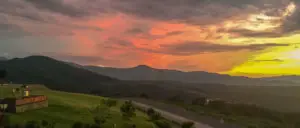
7. You will get injured
This seems to be a sad but inevitable reality on the Camino. During our 40 days of walking, I can’t recall meeting anyone who didn’t have some sort of affliction plague their walk. Luckily, pharmacies are everywhere on the route and it isn’t hard to pick up plasters or compression bandages. However, planning ahead and bringing your own from home is definitely cost-effective.
8. Hiking poles will be your saviour
I know some people who managed to complete the Camino without any hiking poles but they were in the minority. Personally speaking, I don’t think I could’ve finished my journey without them. It is said that if used correctly, hiking poles can bear 25% of your weight which is a life saviour when it comes to the hills!
Read more: Camino Packing List for Women.
9. You will come to resent those who begin their journey after you
Starting your Camino at one of the earlier stages gives you a weird sense of entitlement. It is not uncommon for pilgrims who begin early to grow hugely frustrated with the surge of people that join the way at the final stage to qualify for their Compostela. This annoyance and sense of entitlement is undoubtedly irrational but it seems to be an emotion that most of those on the longer trails share.
9. Despite this, it is satisfying to find that you outpace the newbies
Observing the bulk of people joining the pilgrimage with 100km to go isn’t only frustrating but sometimes it is downright rage inducing. As they scamper past you with their clean boots and not yet battered feet, resentment is rife. However, you will also find they are quick to drop off and the satisfaction of passing by them is second to none. This is the time to be truly grateful for all those weeks of walking.
10. Dogs wander everywhere unattended
Spain is not like many other western countries in that everyone leaves their dogs unattended. Even in the cities, owners will let their dogs run riot and simply rely on them to return home at the end of the day. This is great if you are a dog lover as you can meet a whole variety of canines but watch out for the big dogs which guard the farms.
11. Your bladder capacity will increase
One thing that I wished I knew about the Camino was just how few toilets there would be along the trails and just how much money I would end up spending in cafes simply to use their loo. Always bring pocket tissues to ensure that you don’t get caught out and try to empty your bladder before leaving anywhere with a toilet. There were a few times I had to hold it for what felt like hours and I’m sure this increased the capacity!
12. You don’t even need a guidebook now
When you walk the Camino, you will notice that everyone has the infamous Brierley guidebook. Whilst, the maps and stage breakdowns are useful, I am going to go out on a limb and tell you that you don’t actually even need a book. Thanks to the ingenious CaminoTool app, all of the stages can be viewed on an interactive map. It shows which of the official routes that you are on, as well as accommodation and food options in the area. There is the opportunity to get cashback at certain establishments and you can even filter your searches based on price or proximity. The best thing about the app is that it is free and can be used offline. Download it and let it guide your Camino.
13. The people make it
I have met numerous people on this trip who said the whole reason they decided to do the Camino was to walk alone and think. Out of all of those people, I know no one that walked their entire journey alone. The demanding nature of the Camino is a catalyst for friendship and you bond far quicker than you would usually. It is a cliché but the people you meet along the way become your Camino family and it is them that make the journey so special.
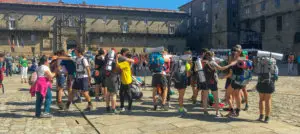
14. It is better to get off stage as soon as possible
The vast majority of people stick to Brierley’s suggested stages like the bible so the accommodation in the marked destinations will be busier than those off stage. If you are looking for somewhere to stay with more space and fewer people, I would recommend going on to the next place after a stage finish. The accommodation at these stops is often of a higher quality and a bit quieter for chilling out. This is my top tip for walking the Camino de Santiago!
15. People run the Camino!
This was one thing that truly took my breath away. I had thought I had taken on a massive undertaking just by walking the Camino but there are real-life people who actually choose to run the 500 miles from St Jean Pied-de-Port. Amazing or crazy? I haven’t quite made up my mind yet.
15. The trail is very community spirited
One of the best things about doing the Camino is how quickly you are adopted into a community. There is a huge amount of camaraderie on the trail (especially in the earlier stages) and pilgrims don’t miss a chance to say hi with the standard greeting, ‘Buen Camino’. There are numerous hostels and rest places that are run solely by volunteers and survive on donations from pilgrims. If you’re sick of all the sad stuff on the news, doing the Camino is a great way to restore your faith in humanity. Look out for the universal camino symbol, the clamshell. This will often by donned by pilgrims.
16. There are plenty of people who don’t do the Camino for religious reasons
Knowing that I was embarking on a Catholic pilgrimage, I expected the vast majority of my fellow hikers to be religious to some degree. However, this is much more uncommon than you would think. From what I saw, the vast majority of people were doing the Camino for personal reasons, whether as a way of discovering themselves or dealing with something from their past.
17. You will be amazed at how much money you spend on foot care
I am still shocked (and slightly sick) when I think about the amount of money that Tim and I spent on Compeed and other aids to preserve our feet. It wasn’t uncommon on one trip to the pharmacy, we would equal what we would spend on accommodation and food for both of us, that day.
18. Locals will make sure you’re going in the right direction
One surprising thing is that all of the locals seem to know the Camino route and will go out of their way to ensure that you are on the right track. By and large, the Camino is quite well signed and the only time we had any difficulty navigating the way was during the cities. When we found ourselves lost, old men walked us back around corners and people pointed us in the correct direction from car windows. Doing the Camino definitely makes you part of the community!
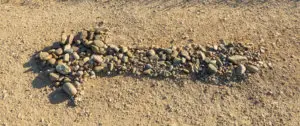
19. You will be lucky if you see the swinging incense burner at Mass
For many pilgrims, the thing that really marks the completion of their Camino is attending mass in Santiago Cathedral and watching them swing the giant incense burner (also known as Botafumerio). Apparently, there are only eight times a year that the burner is scheduled to be swung and the rest of the time depends on the generosity of the donations provided by visitors that particular day.
Top tip: Look out for big groups/tours (often wearing matching t-shirts) queuing to enter Mass. Big tour companies often make hefty donations in order to persuade those in charge to swing the burner for the congregation.
20. Many people continue walking the Camino to Fisterra
Even though the name Camino de Santiago implies that the pilgrimage ends in Santiago (which traditionally it does), many hikers choose to trek further to the coastal town of Fisterra. This is around an extra100km west of Santiago and translates to ‘the end of the world’ as it is the furthest westerly point of mainland Europe.
21. There is a big festival dedicated to St. James in Santiago de Compostela
If you finish your Camino journey around the middle/end of July, it is worth spending a few days in Santiago de Compostela for the festival of St. James, the patron saint of the city. During these two weeks, there are celebrations every night in the Old Town including music, theatre and a wide range of cultural events in all of the main squares. The celebrations close with a big firework display near the cathedral which is not to be missed.
Read more: Things to do in Santiago de Compostela.
Top tip: The incense burner is always scheduled to swing on July 25th (St James Day), at the High Mass. This is usually attended by a member of the Spanish royal family as well so it is definitely worth attending if you will be in the city. Be warned, it gets very busy so make sure to start queuing early!
Have you done the Camino de Santiago? What things surprised you?
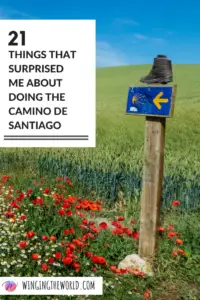
Love it? Pin it! 🙂

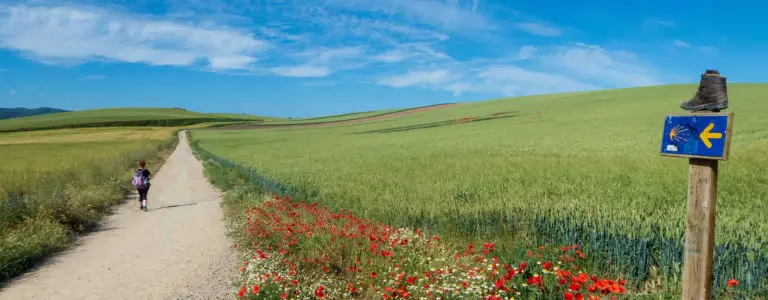
This is really helpful as we were hoping to do at least part of the walk next year. The thing is, I don’t think we’ll be able to get more than a week and a half off work. 🙁
Is there any particular part of the walk that you liked best? I have a feeling we’ll probably be drawn to the mountains…
That sucks but it doesn’t have to be the end of your Camino dream! You’ve got a couple of options if you’re on limited time. You can either start at Sarria which is just over 100km from Santiago, this way you’ll have walked the minimum distance required to get your Compostela (the finishing certificate). However, the views are definitely not as nice along the last 100km and there are massive crowds.
My favourite part of the trek was probably the beginning. Start in St. Jean, France and then walk across through the Pyrenees into Spain. You’ll be sure to make it to Pamplona in a week and a half and it is a beautiful city. Potentially (depending on how fast you walk) you would probably get all the way to Logroño which would be a good base to finish in as it’s a big city.
One huge plus of the Camino is that if you begin at one of the major start points (which St. Jean is) you can get your pilgrim passport and gain stamps along your way from albergues (hostels) and cafes. If you can’t do the whole pilgrimage in one, you can come back as many times as you like and simply pick up where you left off! Plenty of people do this and it would be my personal recommendation so you get the best of the scenery. Sorry that turned out to be a bit of an essay! Hopefully it helps 🙂 Buen Camino!